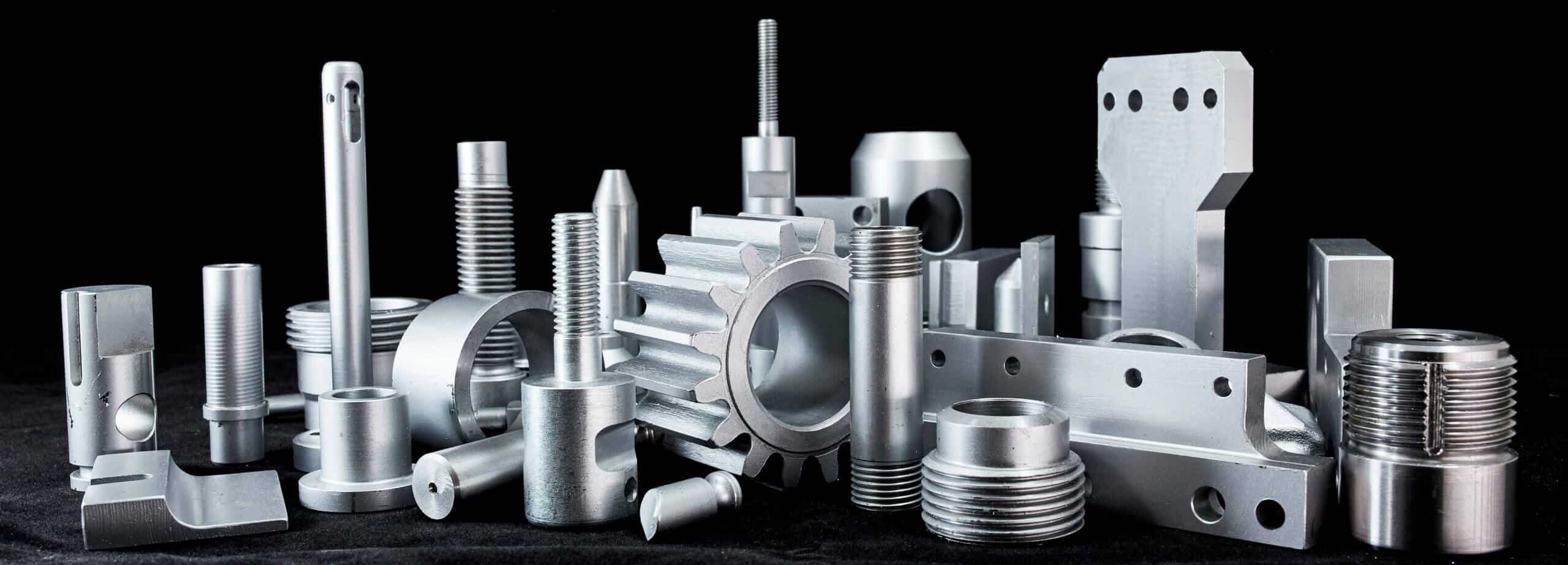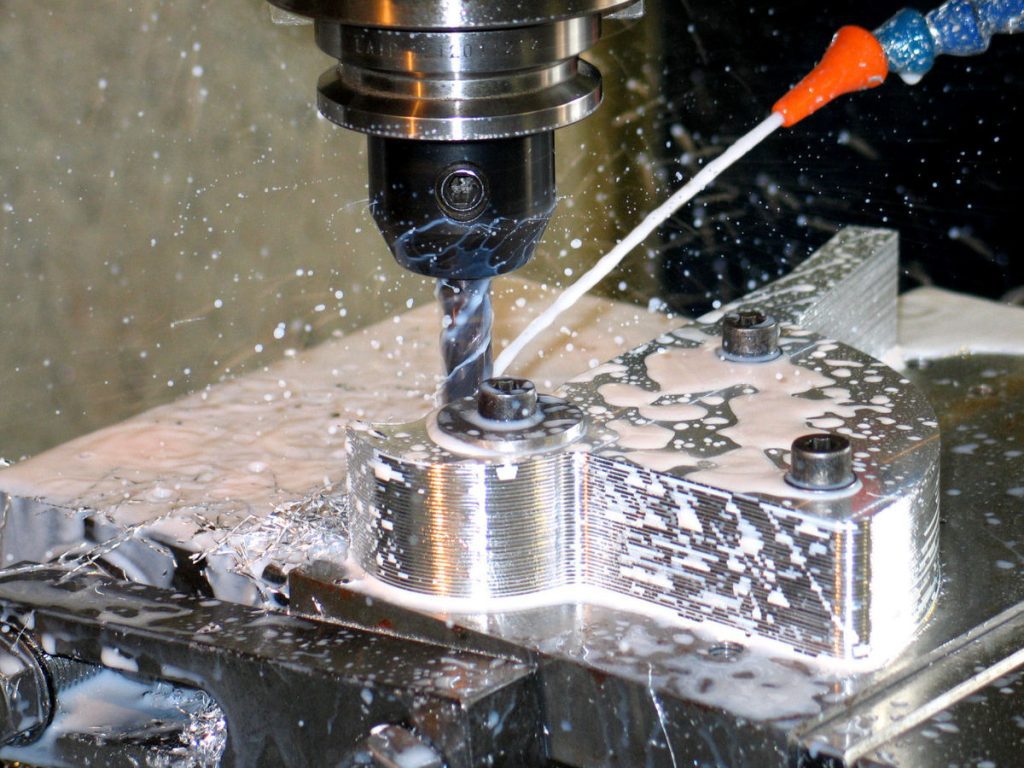Fasteners and Machining: Integrating Accuracy and Toughness in Production
Fasteners and Machining: Integrating Accuracy and Toughness in Production
Blog Article
Navigating the Globe of Fasteners and Machining: Techniques for Precision and Speed
In the detailed realm of fasteners and machining, the pursuit for precision and rate is a continuous obstacle that requires precise focus to detail and calculated preparation. From understanding the varied selection of fastener kinds to picking optimal materials that can hold up against rigorous demands, each action in the procedure plays a critical function in attaining the desired result. Accuracy machining strategies further raise the intricacy of this craft, calling for a delicate balance between technological knowledge and cutting-edge approaches. As we explore the methods that can boost both rate and effectiveness in this domain, the interaction in between top quality control measures and operational excellence becomes an important focal factor.
Understanding Fastener Types
When selecting bolts for a task, recognizing the different types available is essential for guaranteeing optimal efficiency and integrity. Fasteners are available in a variety of types, each made for details applications and needs. Screws are utilized with nuts to hold materials together, while screws are versatile bolts that can be used with or without a nut, depending upon the application. Nuts, on the other hand, are internally threaded bolts that friend with screws or screws, supplying a safe and secure hold. Washing machines are necessary for distributing the tons of the fastener and protecting against damages to the material being attached. Furthermore, rivets are permanent bolts that are suitable for applications where disassembly is not required. Recognizing the distinctions between these fastener kinds is important for picking the right one for the work, guaranteeing that the link is strong, durable, and trustworthy. By selecting the ideal fastener type, you can maximize the performance and long life of your job - Fasteners and Machining.
Choosing the Right Products
Understanding the value of selecting the best products is paramount in making sure the optimum efficiency and integrity of the selected fastener kinds discussed previously. When it comes to fasteners and machining applications, the product selection plays a crucial role in identifying the overall stamina, resilience, deterioration resistance, and compatibility with the desired setting. Different products supply differing residential or commercial properties that can dramatically impact the performance of the bolts.
Common materials used for bolts consist of steel, stainless steel, titanium, brass, and aluminum, each having its one-of-a-kind staminas and weaknesses. Steel is renowned for its high toughness and longevity, making it appropriate for a broad variety of applications. Selecting the right product includes thinking about elements such as stamina requirements, environmental problems, and budget constraints to make sure the preferred performance and long life of the bolts.
Accuracy Machining Techniques

In enhancement to CNC machining, various other accuracy methods like grinding, transforming, milling, and boring play vital roles in bolt production. Grinding aids accomplish fine surface area coatings and limited dimensional resistances, while transforming is often used to develop round parts with specific sizes. Milling and drilling procedures are crucial for shaping and developing openings in bolts, ensuring they fulfill specific specifications and function correctly.
Enhancing Rate and Effectiveness
To optimize bolt manufacturing procedures, it is necessary to streamline procedures and implement effective methods that enhance accuracy machining techniques. One crucial strategy for enhancing rate and efficiency is the execution of lean production principles. By decreasing waste and focusing on continual renovation, lean techniques aid optimize and eliminate bottlenecks workflow. Additionally, buying automation innovations can dramatically boost manufacturing rate. Automated systems can take care of repetitive jobs with accuracy and rate, enabling employees to concentrate on more facility and value-added activities. Embracing Just-In-Time (JIT) stock management can also improve performance by ensuring that the right products are readily available at the ideal time, lessening excess stock and decreasing lead times. Fostering a society of partnership and communication amongst group members can enhance total effectiveness by promoting openness, analytical, and innovation. By incorporating these methods, manufacturers can attain a balance between rate and precision, inevitably improving their affordable edge in the bolt market.
Quality Assurance Steps
Applying strenuous top quality control steps is essential my website in guaranteeing the integrity and uniformity of fastener items in the production process. Fasteners and Machining. Quality control actions include various stages, starting from the option of raw materials to the final examination of the completed fasteners. This entails evaluating factors such as product toughness, strength, and structure to guarantee that the fasteners fulfill market criteria.
Routine calibration of equipment and equipment is necessary to preserve uniformity in manufacturing and ensure that bolts meet the needed tolerances. Implementing stringent methods for determining and addressing non-conformities or problems is vital in stopping substandard products from getting in the marketplace. By developing an extensive top quality control framework, suppliers can maintain the reputation of their brand name and provide fasteners that meet the greatest criteria of efficiency and sturdiness.
Conclusion

In the complex world of bolts and machining, the pursuit for precision and speed is a perpetual challenge that demands precise interest to information and critical preparation. When it comes to fasteners and machining applications, the material selection plays an essential function in figuring out the general stamina, toughness, rust resistance, and compatibility with the desired atmosphere. Accuracy machining includes numerous innovative approaches that ensure the tight tolerances and requirements required for fasteners.In enhancement to CNC machining, other precision methods like grinding, turning, milling, and boring play important functions in bolt manufacturing.To maximize fastener production procedures, it view it is essential to streamline procedures and implement effective methods that complement accuracy machining strategies.
Report this page